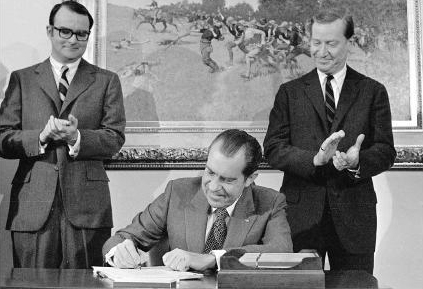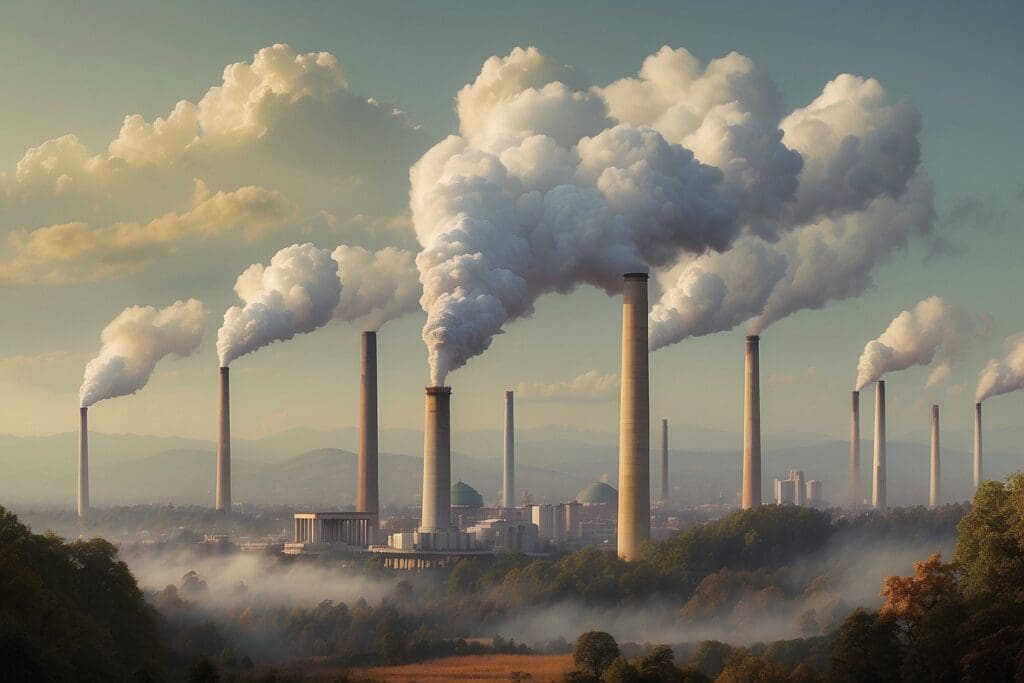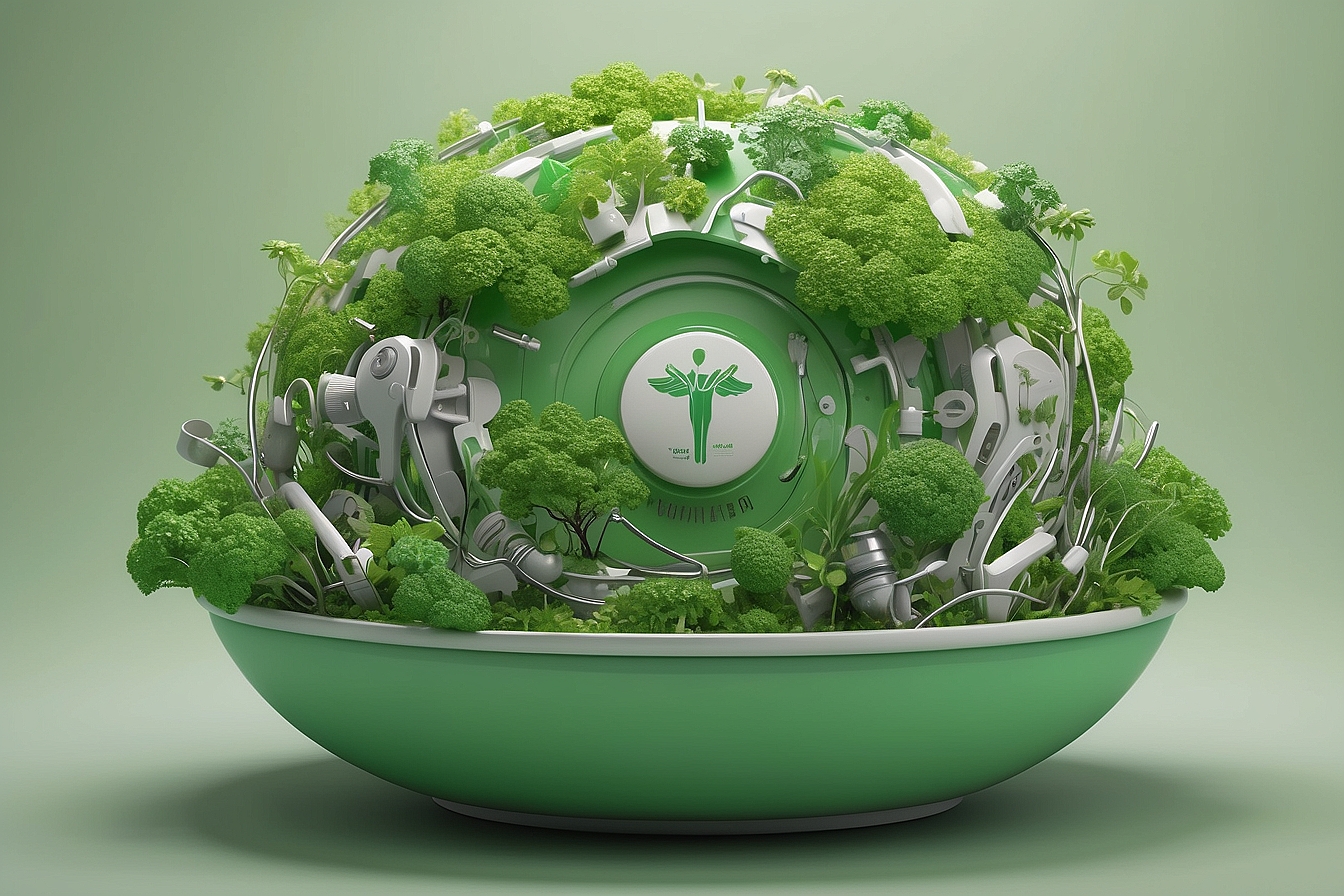As ecologist Garrett Hardin stated in his famous commentary, Tragedy of the Commons, humans always tend to take more and more without regulation.1 This has led to problems with here .
https://web.archive.org/web/20160404102218if_/http://www.youtube.com/embed/yk8NN4nNgs4 2
Legislation History
The first federal legislation related to air pollution or quality was the Air Pollution Control Act of 1955, following a limited number of state and local regulations already enacted to address air pollution. Unfortunately, the Air Pollution Control Act mainly produced a fund that went to research and technical assistance, resulting in not much being done to actually reduce pollution.3 Nonetheless, the first Air Pollution Act brought awareness to the problems that air pollution brings to our health and environment, making it an issue that required national attention.
Meaningful regulations began with the Clean Air Act of 1963 which set a national emission standard for stationary polluters as well as providing funds to aid in pollution reduction. Then, because of how loosely written it was, it was amended in 1970.4 This amended Clean Air Act of 1970 allowed federal and state regulations to limit emissions from stationary and mobile sources. It created four separate programs: the National Ambient Air Quality Standards (NAAQS), State Implementation Plans (SIPs), New Source Performance Standards (HSPS), and National Emissions Standards for Hazardous Air Pollutants (NESHAPs). 5

Nixon signing the Clean Air Act on Dec. 31, 1970 6
The NAAQS sets standards for six of the most harmful and abundant pollutants: sulfur dioxide, nitrogen dioxide, particulate matter, carbon monoxide, ozone, and lead. It separates these pollutants into primary and secondary standards.7 Primary standards provide public health protection and secondary standards provide public welfare protection. In order to keep track of how states are keeping the levels of the pollutants controlled under NAAQS, each state must submit a SIP to the Environmental Protection Agency (EPA).8 However, many states could not reach the standards that were set by the Clean Air Act, causing Congress to pass the 1977 amendments to assist the states reach their goals.9
The last and most recent set of amendments were set in 1990 to expand what the Clean Air Act controlled as well as phasing out ozone depleting chemicals, and implementing the Montreal Protocol. By widening the kinds of pollution the Clean Air Act aims to reduce, including interstate pollution and pollution that originated from Mexico or Canada, the EPA received broader powers and can fine and penalize violators. These amendments also emphasized a more cost-efficient regulation.
Clean Air Act’s Current Reach
The Clean Air Act now oversees and mandates the sources of 188 hazardous air pollutants, as well as the 6 previously stated that are under NAAQS. Regulated by the EPA, main sources and area sources must abide by the Maximum Achievable Control Technology (MACT) Standards which were set in place with the 1990 Amendment. Main sources are defined as emitting at least 10 tons of a single listed toxin or 25 tons of a combination of the listed toxins. Area sources are smaller sources of pollutants and are defined as emitting less than the standards for main sources. Each has to follow standards set for by the EPA. As technology increases, the EPA has developed standards that will require area sources to use Generally Available Control Technologies (GACT).10 This requires things like new power pla the Clean Air Act. Although stationary sources are the biggest culprits of air pollution, the rising amount of car owners and other vehicle owners has brought attention to the need of another category of polluters.
The Clean Air Act now also includes mobile sources to regulate the emissions and technology in vehicles. As with stationary sources, there are stricter regulations for newer sources since they can start off with preventative technology rather than mitigating past effects. However, the 1990 amendment made changes that affect old and new vehicles alike, changing the quality of the fuel legally sold in areas of high pollution, and broadening the definition of a “mobile source” to include non-road vehicles like boats and tractors. As with the stationary sources, there are programs set in place to reduce the emissions of moving sources. This includes extreme attention to Carbon Monoxide and Ozone Depleting Chemicals.11
12The Clean Air Act is a constantly changing piece of legislation that is expanding in order to have the standing to regulate all sources of pollution. It represents a minimum standard for the nation, but many states, like California, that rely on the pristine quality of its natural resources tend to have tighter regulations. Unfortunately, as the regulations become more stringent, the businesses and corporations that pollute the most tend to outsource their work to be able to use cheap labor as well as not to worry about emissions.13 Although their emissions will no longer effect American skies directly, the planet shares one atmosphere. Moving the sources to other places is both unethical, because these places are usually developing countries that are already dealing with many environmental and economic issues, and unhealthy for the planet as a whole. Corporations will always find a way to weasel out of such government restrictions but seeing how the Clean Air Act was able to evolve from simple regulations to a specialized list of over 188 different toxins, this may not be the case for much longer. As with the majority of environmental issues, we will need to work together as a planet in order to effect real progress and sustainability for future generations.





